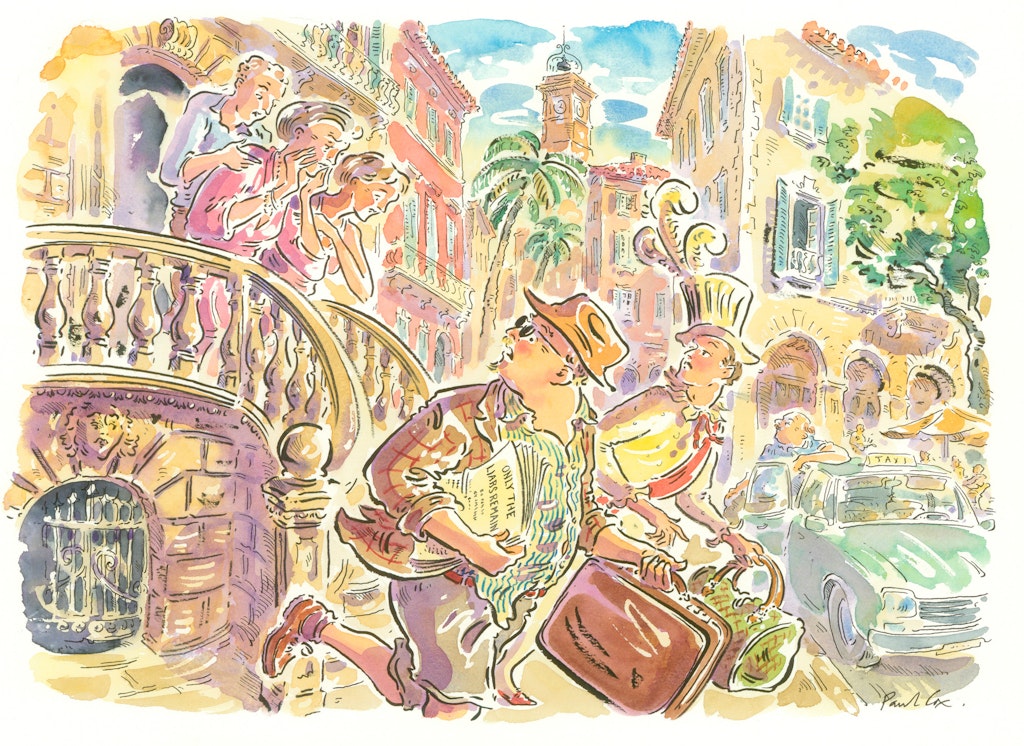The local food revival
Felipe Fernández-Armesto rejoices in the pleasures and comforts of traditional food
If I am tempted to try a trendy tidbit, I order drinks and wait until the mood has passed. Fads fade. Nouvelle cuisine lost its novelty. Cuisine minceur dwindled to invisibility. “New soul food” will never replace fat pork-belly and collard greens. The kind of chemically contrived cuisine d´auteur that dazzled Ferran Adrià’s patrons when he was at the precarious pinnacle of a wisp of deconstructed spume seems clunky now, like ethnic necklaces and platform heels. Fusion food? I reach for my revolver. For food gurus, gustatory innovations are professional hazards, like concussion to boxers and hate-tweets to parliamentarians.
But now, at last, there is a trend I confess to liking: local foodstuffs — not just produce, which has the merit of freshness, but hoary old recipes — are acquiring, for fashionable eaters in the places concerned, a kind of vicarious exoticism. A whelk stall has reappeared in London’s theatreland. Pilgrims scour the East End for vestigial pie-and-mash joints. Lincolnshire chine is back in Lincolnshire. Where I write, in the US Midwest, corn-breaded lake perch, broiled walleye and braised bison are currently popular menu-items. In Minnesota, people claim to like lutefisk — the region’s nostalgic lye-dried stockfish of Norse ancestry — which, when cooked by a Minnesotan with proper pride, has a slimy finish and the smell of a hospital latrine. In Bavaria, friends tell me, citizens have renewed their taste for lingerl, the stewed lungs that evoke bayrische Gemütlichkeit. They eat them with grimly patriotic defiance, in awareness of self-sacrifice, like trueborn Englishmen voting for Brexit.
A paradox is at work. Local dishes stay local because they are too revolting to export successfully. Visitors to Blackburn — for football,perhaps, or Stonyhurst — rarely risk the pallid, gooey confections that bear the name of the town. Blackburn cakes are like all totemic foods: by excluding outsiders, they link those who eat them in common identity. You have to be Dutch to tolerate haringsnoepjes — herring-flavoured boiled sweets (I’m not making this up).
I’ll accept a lardy cake in Oxfordshire in piam memoriam, but never because I care for greasily suppurating dough. Loyal cognoscenti in Buffalo in upstate New York ask not for the universal, lamentable and eponymous “Buffalo wing” but the unwieldy “Weck” sandwich that squirts you with gravy and smatters you with salt-crystals. I recall the disappointment with which, in my youth in Spain, I tried the eructation-inducing chickpeas of Fuentesaúco, having been lured by the ironic piety of the proverbial rhyme: el buen garbanzo y el buen ladrón, de Fuentesaúco son — which may be Englished:
The chick-pea-in-chief,
The Good Thief:
Where shall we look? Oh,
Fuentesaúco.
I welcome traditional revivals, not because I like bad food (though I formerly admired the puritanical resignation with which the English used to eat), but because I am as charmed by endangered species in the kitchen as in the countryside. My idiosyncrasies of taste, however, cannot account for such a widespread phenomenon as the rediscovery of local communities’ peculiar foods. Why, instead of decently dying out, are objectively unpalatable dishes re-emerging in their little homelands?
Four explanations arise.
First, conservatism in humans — though unpredictably penetrable by fashions and invasions — is an evolved survival mechanism, strongest in respect of food. The same caution that protected hominids from glistening but poisonous fruit makes equivocal husbands crave “the bangers-and-mash me muvva used ter make.”
Second, local dishes may be unintended beneficiaries of environmentalists’ campaigns against wastefully long-hauled products. My neighbours, after retrieving from imperilled eco-systems the delights of Michigan cherries and Indiana corn, may be disposed to dip into the lake for a perch or into Grandma’s recipe-book for barbarously-named Cornish-Finnish Michigan Pasties or for Hoosier Fries — waxy wedges in thin batter that no one outside Indiana would ever think of eating.
Third, as globalisation crowds shelves and menus with all that comes from everywhere, the exotic loses allure: rarity-value shifts to the formerly familiar and nearly forgotten. Strangeness can be attractive, even to the defensively-minded: otherwise, colonists and conquistadores could never have founded distant empires. But when the edges of the atlas lose their fascination, and the imports and impositions cloy, you turn homeward and rediscover surprise in your neglected heritage.
Finally, agglutinative processes set up fissile reactions. It is exciting, but scary, to be immersed in something big and increasingly homogeneous, such as the United States, or an ever-closer European Union, or a globalising world. Threatened with immersion in enormous entities, eaters, like voters, reach for the comforting sense of belonging to places and people of their own. They welcome walleye and withstand Washington. In a globalised market, they look for whelk stalls and Weck-shops, while, on their iPhones they retreat into self-affirming cyber-ghettoes. Ill at ease with the fancy international menu at a trendy restaurant, John Mortimer’s Rumpole demanded “steak-and-kidney pud and mashed spuds”. There are times when we all know how he felt.
Enjoying The Critic online? It's even better in print
Try five issues of Britain’s most civilised magazine for £10
Subscribe














